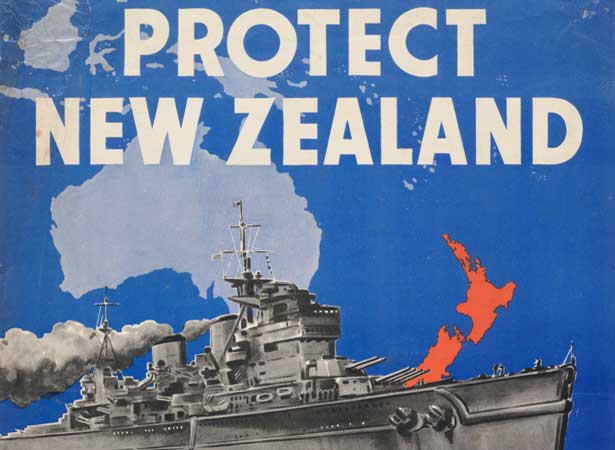
The announcement by the Prime Minister’s Department that New Zealand was in a state of war with Japan followed the surprise attack on the United States naval base at Pearl Harbor, Hawaii, on the morning of Sunday 7 December (8 December NZ time). This raid was part of a startling assault during which Japanese forces struck Hong Kong, Thailand, Malaya, the Philippines, Guam, and Wake Island.
At the time Japan launched its attacks, New Zealand had military personnel based in Burma, Malaya, Fiji, and the Gilbert Islands. There were some 400 air and ground crew in Malaya and Burma, and around 5000 army personnel in Fiji, supported by an air reconnaissance squadron. Far away in the central Pacific, there was a military detachment on Fanning Island, and a number of service and civilian coastwatchers in the Gilbert Islands.
It was at Butaritari Atoll on the northern Gilbert Islands that New Zealanders felt the first direct impact of the Japanese advance. On 10 December 1941, Japanese troops occupied Butaritari, capturing seven coastwatchers in the process. As some of the first Allied prisoners of war transported to Japan, they were objects of curiosity and were treated well. The rest of the coastwatchers were less fortunate.
By mid-1942 the Japanese had established an extensive perimeter, stretching from Wake Island in the east through the northern Gilbert Islands to Rabaul on New Britain. Further west, Japanese forces overran Hong Kong, British Borneo and Malaya. The key British base at Singapore fell in February 1942, followed by the Dutch East Indies (modern-day Indonesia), the Philippines and most of Burma. These losses, particularly that of the ‘impregnable’ fortress of Singapore, left many New Zealanders feeling defenceless and fearful of an imminent Japanese invasion.
Image: New Zealand National Savings Committee poster, 1942, which tapped into New Zealand's fear of Japanese attack.
Read more on NZHistory
The war against Japan – War in the PacificOverview: 1913-1945 – Royal New Zealand Air ForceRNZAF timeline – Royal New Zealand Air Force
External links
How to cite this page
'New Zealand at war with Japan', URL: https://nzhistory.govt.nz/new-zealand-declares-war-on-japan, (Ministry for Culture and Heritage), updated 15-Oct-2021
